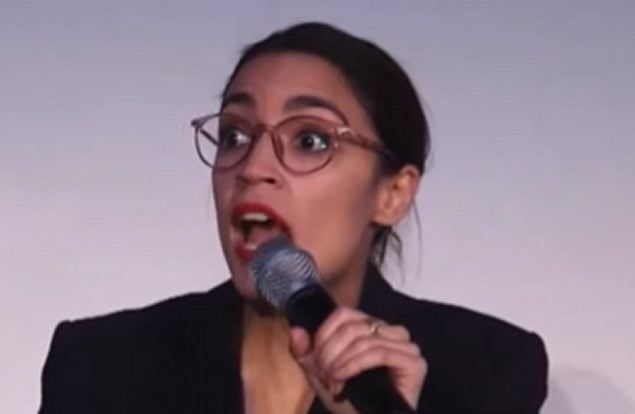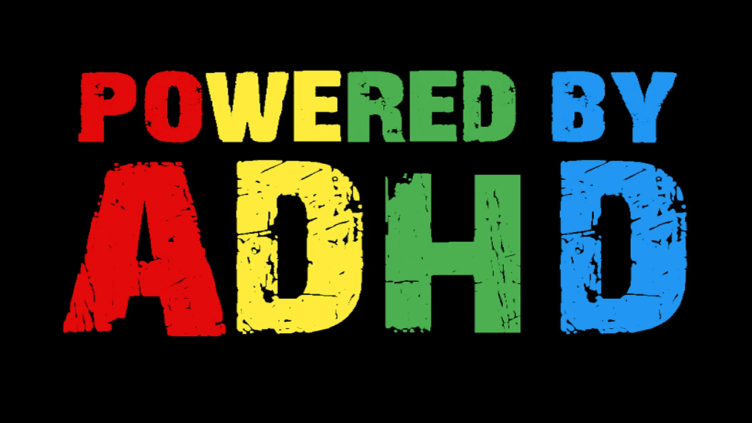When she was sent the script for Mr. Malcolm’s List, star Freida Pinto says it felt like it was written for her.
Sharing a name with her character, and having studied English Literature in college, Pinto could already imagine herself as Jane Austen’s “complex” and “beautifully nuanced characters.” Yet despite feeling seen on the page, the actress and producer notes that “film and TV did not represent people who look like me in these period projects.”
That lack of representation is one of the driving forces behind the Regency rom-com and director Emma Holly Jones’ vision for her feature film debut. The film notably departs from Hollywood’s period piece conventions and offers a modern spin on the regency romance genre, showcasing not only a racially inclusive cast of characters but women who refuse to conform to the expectations and boundaries set by society.
“Look how many people love Downton Abbey,” Jones told The Hollywood Reporter in an interview ahead of the film’s release. “This genre has a cult following. Why have [we] not opened it up? To be awash with young available British talent and giving the world a genre that they didn’t know was for them — that to me says dollar signs, personally.”
Mr. Malcolm’s List marks the first time Pinto has worked with a female director, with the actress also noting the movie’s two leads of color are a “significant step” in storytelling — and something she has yet to commonly experience in her film career. “I’ve been in the industry for almost 14 years, and whenever a script would come my way where I played a romantic lead, the stipulation always was that the person opposite me had to be white,” Pinto recalls.
The film made strides behind the scenes as well, with several women in key production roles such as casting director, editor, composer, hair designer, makeup designer, costume designer and more — in addition to its female-led team of producers. That includes executive producer Pinto, and producers Laura Lewis, Laura Rister and Katie Holly, all responsible alongside Jones for shepherding the screenplay for Suzanne Allain’s book of the same name to the screen.
Mr. Malcolm’s List tells the story of eligible bachelor Jeremy Malcolm (Ṣọpẹ́ Dìrísù), whose attempts to find a partner that will meet his list of expectations results in him earning the ire of Zawe Ashton’s Julia Thistlewaite, the center of the season’s gossip following his rejection. Hoping to turn the tables, she recruits longtime friend Selina Dalton (played by Pinto) to catch Jeremy’s eye and return the favor of embarrassment in a period rom-com that produces as many surprises as swoon-worthy moments.
Ahead of its release, Pinto spoke to THR about how she became involved with the project, the experience of working with so many women at the helm, her own approach to the film’s inclusive narrative and the film’s potential impact on Regency romance.

Freida Pinto as Selina Dalton in ‘Mr. Malcolm’s List.’
Ross Ferguson / Bleecker Street
How did you get involved as both an actor and producer, and what attracted you to the story as both?
I was sent the script by Laura Lewis, who is one of the producers on the film. She used to be a sales agent at CAA and she and I had connected. We talked at length about the kind of projects that we wanted to make. Then she went on and started her own company and Mr. Malcolm’s List — which was on The Blacklist — was one of the projects that she was trying to get off the ground. When the script came in, I was in New York and she told me about it. I think at that point in time, Emma was already in the works trying to figure out how to get the short made. In the interviews that we’ve done for Mr. Malcolm’s List, it was so interesting listening to Ṣọpẹ́’s experience when he was first sent the script and Zawe’s experience when she first read the script. It was interesting because I think it is a product of me growing up in India where the only other race was Indian around me — and studying English literature, Jane Austen and all the poets. Whenever it came to talking about certain characters, I could totally see myself as these characters. Now that was a different story with film and TV. Film and TV did not represent people who look like me in these period projects.
So when the script was sent to me, it felt like it was almost a long time coming. I studied English literature in college. I imagined myself as all of these amazing, complex, beautifully nuanced Jane Austen characters — not just chasing the man or the marriage, but really, women who had agency in whatever small way they possibly could within the constructs of society at that time. And when Laura sent me the script, I was like, “Yeah, this is basically written for me, so I am ready. Let’s go ahead and do it.” My middle name is also Selina — not that that played into the role. (Laughs) But it just felt right, if that makes sense. I did not have to, at that point in time, suspend imagination in order to think, “What would this feel like for an Indian woman to play this character traditionally written for white Caucasian European women.”
How familiar were you with the book ahead of filming and if you weren’t, did you read it at any point?
I hadn’t read the book at that point in time. I didn’t even know there was a book called Mr. Malcolm’s List. And I’ll be completely honest, I hadn’t read the book even when I shot the short film because I did know that Emma was going to encourage and invite our thoughts on the characters, as we were keeping true to the book. So when I did the short film and we just took an excerpt from the script and we went ahead and made the short film. Ṣọpẹ́ read the book and read it in great detail. When he told me about it, it actually made me realize that I did not want to get very influenced by what was written and then get too married or tied to it. When I did this movie called Trishna, it was based on Thomas Hardy’s novel Tess of the D’Urbervilles, and I realized that because I had read the book in college, then again for the film, it interfered a lot in my creative process. So just to avoid that from happening again, I decided to go ahead without reading the book. I will say that, actually, there were details that I got from Ṣọpẹ́, which I’m really glad I did and there are details that I’m glad I did not read at all.
How was it to step into this kind of period role and how might it be different from other parts that you’ve had?
I feel as an actor you bring in the same amount of commitment, dedication, research, preparation to every project so that pretty much stays the same. Since this was my first experience doing a period film being in Regency costume and embodying the language, the mannerisms — mannerisms is such a huge thing from this time, so really spending time working with a wonderful historian on set — I think that was different for sure. When I walk into a contemporary film, I am familiar with contemporary mannerisms. I’ve grown up in modern times. I know what to do with a cell phone. But in this film, a teacup, for example, and how you hold it and your posture, how you sit — and what the corset does to your body when you are wearing it — all of that was an introduction. It was fun and that was new. But in terms of the soul of who this character is, and how she sees herself in a society that constantly places pressures on women, it’s not very different from what women go through today.
This film is not only racially inclusive but centers on multiple women of color and is led by a number of women, including Jones. As a producer, what was it like to be a part of a project where you had this level of say while working with so many women?
I’ll be very honest with you, this did not require me to fight. So often, you have to fight for your place, fight for how you want to be seen in the film, how you want the other characters to see the film. So as a producer on a film that seemingly should have been a lot about us fighting for our place, that did not happen on this project at all. It felt like from the very beginning, Laura Lewis and [Laura] Rister, two producers on the film, and Emma were very aligned on the fact that whoever they bring in is going to bring in subtle bits of their culture — nuances from how they see these characters as well — and they were not opposed to it at all.

From left: Naoko Mori, Freida Pinto and Zawe Ashton in ‘Mr. Malcolm’s List’
Ross Ferguson / Bleecker Street
Zawe was the last actor to be cast, and I worked with her on this TV show called Guerrilla. I felt very happy that I could be involved in that casting because it felt like when I was saying that this is our Julia, I was speaking of it from having a wonderful experience, but also knowing her body of work as so rich and layered. She can do everything — she can do comedy, she can do drama — and whatever she does she brings so much depth to it. So as a producer, I’m glad I — in the final casting of Julia — had my say in it. And that would be the only thing that I would say that I had to really go, “This is our Julia. We need to get her right now before she signs on to another part.” But other than that, it was very easy. It was conversational, and Emma really lead that.
How do you feel like having a woman as your director impacted your experience working on this movie with two female leads, complex female relationships and a depiction of gender-based societal hurdles?
Emma is my first ever female director to work with [in film]. I’ve been directed by a woman on one or two episodes of a TV show, but otherwise, I’ve only worked with male directors. So in every which way, it was very exciting for me to see what the difference is. My only point of reference is all the male directors I’ve worked with. And I will say that Emma had a really interesting predicament. She was in a film — her first big feature film — working with all these amazing men around her and had to really pull up her socks every day and let them know that she knows what she is doing. Emma was always prepared. The kind of preparation she did — she’s, like every good director I’ve worked who comes in and leaves no room for people to doubt what her capabilities are. I think that to me was truly impressive to see.
As a woman, it was a lot easier to be part of a project where I could just openly say, “But this is what a lady would do in a situation like this. This is what a woman would do in a situation like this,” without having to explain why. I think that was the biggest difference of working with all the amazing male directors that I’ve worked with in the past and then working with Emma, where that felt a lot easier and a lot more natural. She’s so super talented. She just came in with her A-game every day and also allowed for collaboration. For someone’s first feature film, this is pretty excellent.
Emma has spoken about how the film wove characters’ and actors’ cultures literally into costuming and other production elements. What did you and the other actors bring to that conversation?
So this was one of the things I was very, very careful about. Tokenism really starts interfering with a film when we’re trying to prove something. We try to overcorrect it by justifying our presence in the film. I did not want to do any of that. Whatever I did, I wanted it to be subtle. I wanted to feel like it was organic, and I wanted it to feel like it just came from the characters being who they are and being present in society at that point in time. So one of the things I thought that, being Indian, would be very natural would be textiles and fabric and prints. That is truly something that India has given to a lot of countries and in some cases also had stolen from us — many cases, if your telling history in the most accurate way. (Laughs) Jewels and fabric and tea were stolen, in a sense, from India. So I asked Pam [Downe], our costume designer, if there was a world in which the paisley print — this beautiful tear-dropped print — could be incorporated into the costume and she did such a beautiful job.
The scene where Malcolm and Selina are walking their horses and they have this conversation about why are you here in London — the paisley print is on my dress. What Pam went further to do, which was so beautiful, is she included the paisley print on Malcolm’s costume as well as a way of him showing his appreciation for her culture. Then we called my father Papa, which was something we thought would be an endearing word to just include as opposed to saying father because papa would be something that I think Selina would grow up calling her dad. Ṣọpẹ́ went even further and brought in his language from his culture into the film. So that’s again in the same scene by the water that he speaks in Yoruba. This is the subtle way in which we wanted to weave in our culture without making it too heavy-handed. I wanted it to just feel natural. If I went out of my way to talk about this is India and this is a paisley print and wear my culture on my sleeve, I feel like somewhere deep down the audience would be like, ‘Oh, she is making excuses for being in this movie.’ And I did not want that to come across at all.
This film features two leads of color, a rarity in any film but certainly in romance and Regency, where we’ve seen people of color acting in lead roles but frequently opposite white actors. Do you feel like this is a significant step in terms of inclusive storytelling?
I think it’s a significant step, from my personal point of view, of what I’ve been told time and again in the industry —that the only way a film will be successful is if the person opposite me — and this is mostly in film — was white or a really famous white actor. I’ve been in the industry for almost 14 years and whenever a script would come my way where I played a romantic lead, the stipulation always was that the person cast opposite to me had to be white. This is not something that people even shied away from saying. They would just say it quite openly. (Laughs) “We’re actually now looking for a good balance,” like it should be a white actor. In my mind, I thought about it and have gone, “Yes, of course, there are interracial marriages and couplings [like this] and I’m in one and it’s not something that is uncommon.”

Freida Pinto and Ṣọpẹ́ Dìrísù in ‘Mr. Malcolm’s List’
Ross Ferguson / Bleecker Street
But also what is not uncommon is a coupling that is interracial where both people are people of color. So I’m like, why is that such a thing? Why is Hollywood so afraid of it or was so afraid of it? In Guerrilla, which I mentioned earlier, the romantic leads were people of color — Babou Ceesay and I. It was really interesting how no one questioned the coupling, no one questioned the romance. It made me realize that we only give out formulas because execs are greenlighting formulas that have been successful in the past. So there is every reason for us, when we have the opportunity and when we have a director or producer who wants to see couplings of all races, to go ahead and make it happen.
Do you feel like this is different in the U.K. versus the U.S.?
Yeah, definitely different in the U.K. You know, New York is super multicultural. L.A. is multicultural as well. But Hollywood has kind of put a veil on multiculturalism for themselves — unable to see what really is in society. Then there is a whole chunk of middle America where multiculturalism — I don’t know if it really exists in its full form. But I feel like over here when I walked the streets in London, I almost feel like I see it more than I see it in America. There is less of a fear of incorporating that into this. I also think people are just a lot braver in choices that they make in film and television out here in London and the U.K. But I do think it’s definitely changing in America and film. It’s one step at a time. Like I said, when I was told why the choice would be a white lead actor, it was because they needed it to be successful. They didn’t think that casting two people of color in the lead roles — male, female, female, female, male, male, whatever the combination is — would actually lead to success at the box office.
With TV and film’s inclusive romance, there’s a lot of adaptation happening, which means characters who are written white are being cast for the screen with actors of color. Do you personally want something that’s more original to the specific experience of your character or do you want to play within existing material written for white characters and expand it?
This question really struck me: would you have liked something more original to be written and then you get to play with that or you take the white character adapted to you. In order for me to play a character that is very authentic to who I am — that character or story, we still have to go look for it. I don’t know where it is. I don’t know if it’s been written or that book actually exists. But as a producer — and outside of being a producer on Mr. Malcolm’s List — I am looking for projects like that already. They will be set in India though. Like I told you, I grew up in India where I’d read a lot of Indian literature as part of being an English major student, and I feel like those stories need to be told because those stories are also very rich and nuanced and complex for female characters, specifically. For me, that is my inroad into opening up people’s minds: going back to my roots, going back to my culture and staying true to the story that I’m trying to tell.
As far as books like Mr. Malcolm’s List, it’s kind of a mash-up of the Jane Austen Regency period but also the ’90s rom-com. That is a fantasy world that I want to be part of when those opportunities come my way. But am I actively trying to just do that? Absolutely not. Because I feel like that’s the way we start seeing more of these Regency projects inviting all races or having someone finally find that short story or a story about a woman or a man that lived in a time that was also not nobility, but that could be anybody. It starts by actually opening up people’s minds to those various cultures, so I’m trying to do my part as far as the South Asian culture is concerned and Indian culture is concerned.
Interview edited for length and clarity.
















































.jpg)









